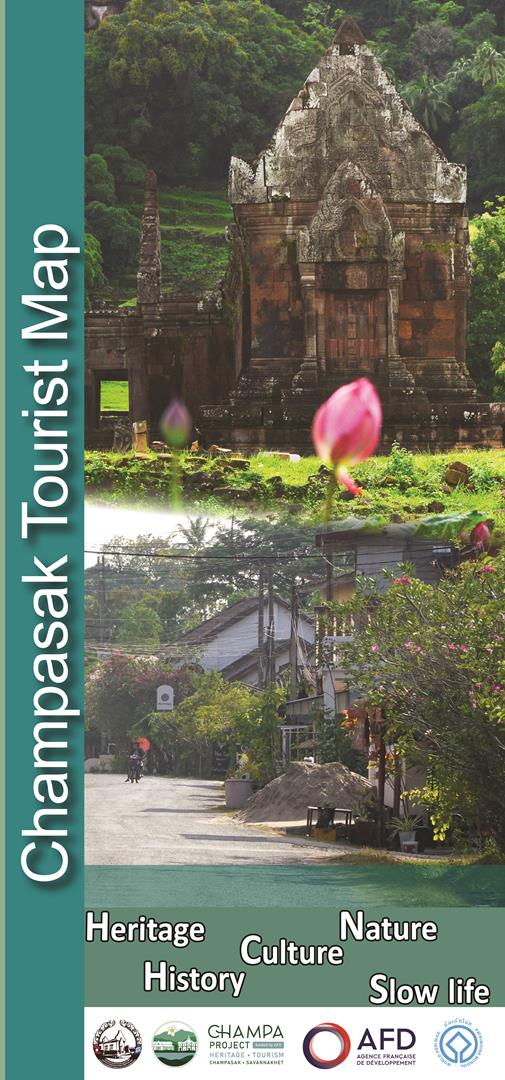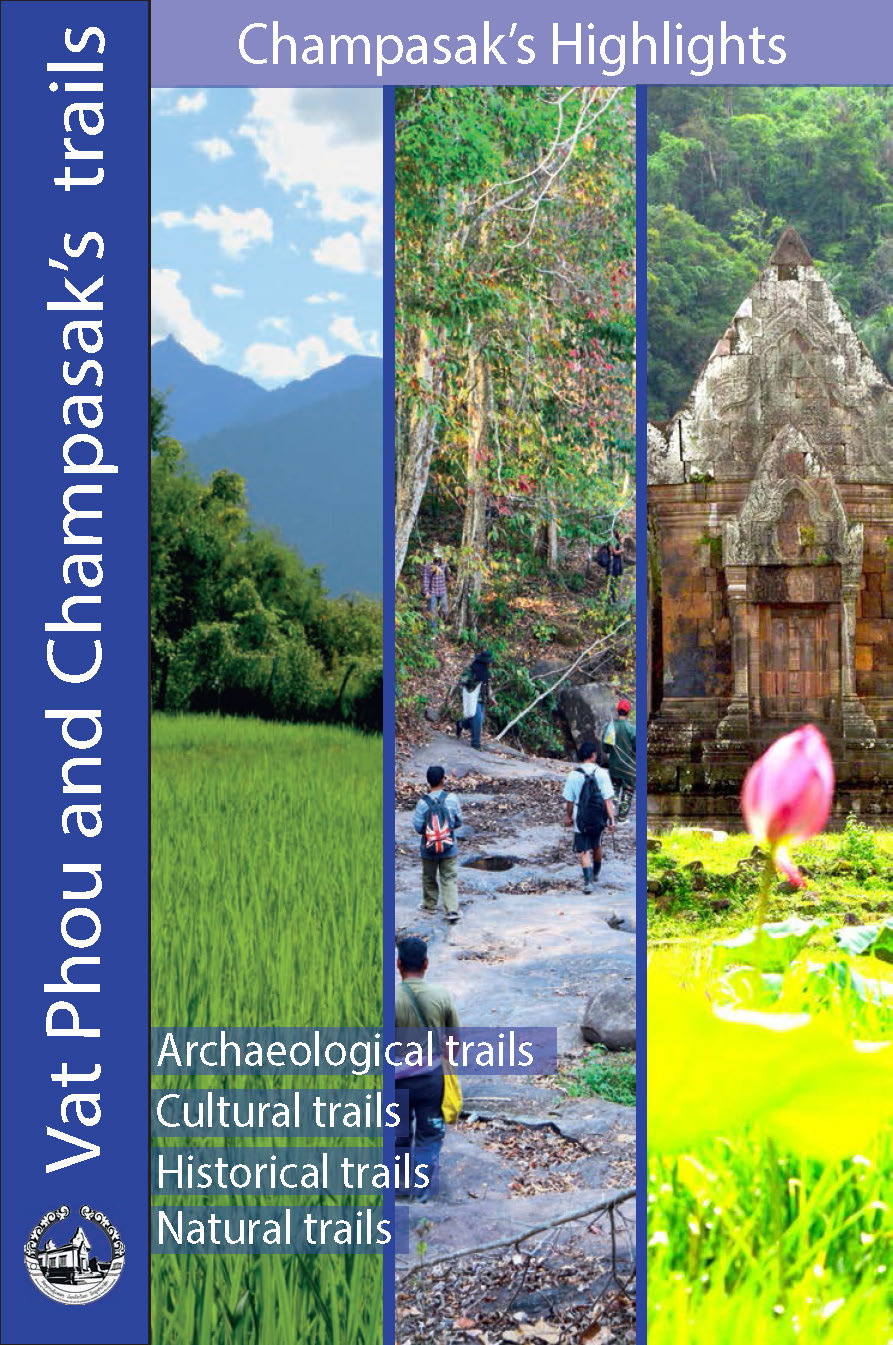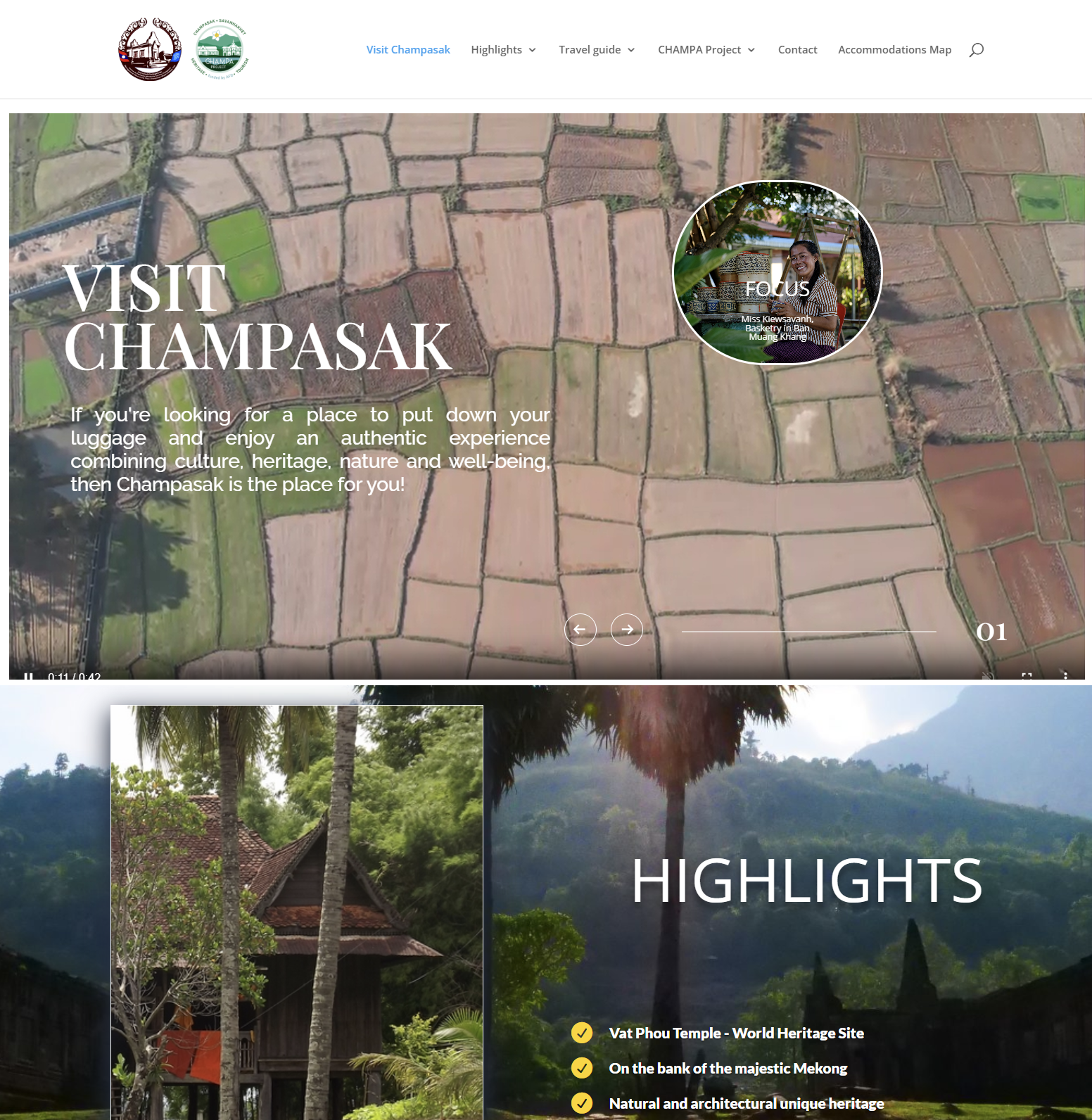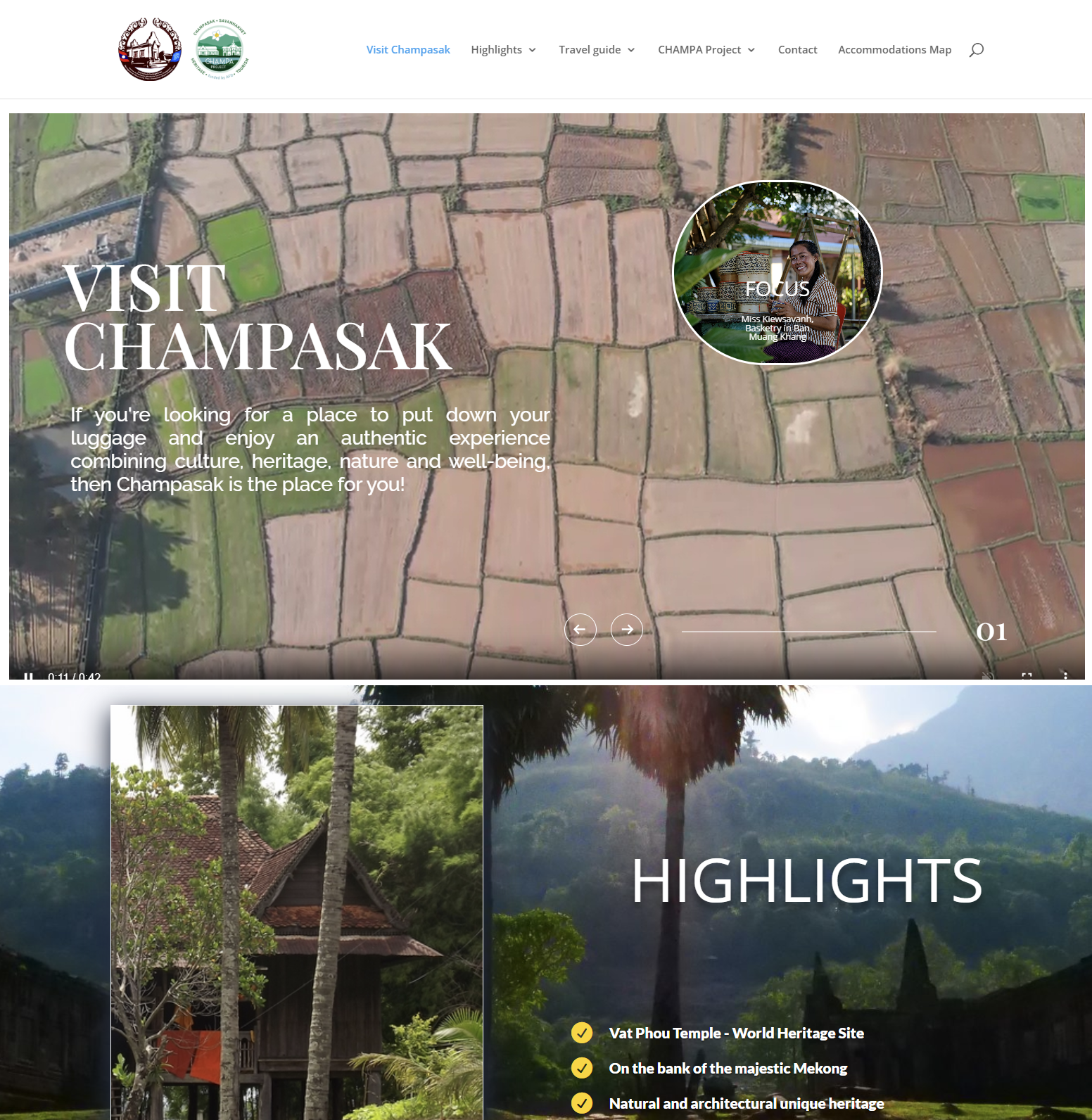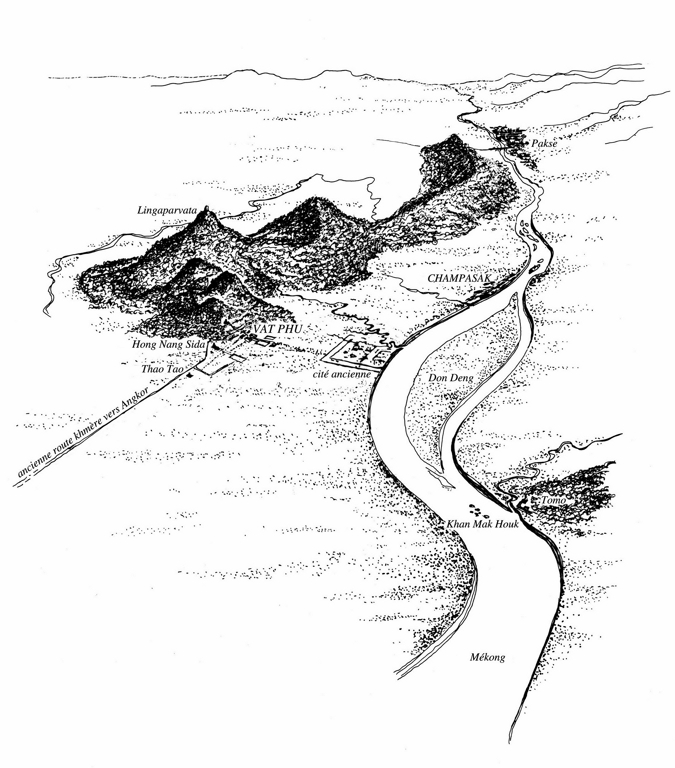Past projects
Ancient research projects
1867: Francis Garnier, the French explorer of the Mekong, writes the first description of Vat Phou.
1907: Etienne-Edmond Lunet de la jonquière (EFEO) draws a map of Vat Phou and its surroundings.
1914: Henri Parmentier (EFEO architect) writes the first scientific report on Vat Phou.
Scientific research projects
1986: Protection plan of the Ancient City.
1991-1998: Archaeological activities.
The "Lao Archaeological Research Project" (PRAL) successfully completed by the French mission directed by Marielle Santoni (Guimet Museum-CNRS) in collaboration with the Lao Ministry of Culture. The excavations took place near the sacred spring, around the sanctuary and in various Pre-Angkorian temples located in the Ancient City.
"Safeguarding, Cartography and Study of the Archaeological Locations", a project by the Italian archaeological mission (Lerici Foundation) directed by Patricia Zolese in collaboration with the Lao Ministry of Culture. Mapping of the Ancient City, discovery of the city of Lingapura, mapping of various sites located along the Ancient Road towards Angkor (Cambodia).
Preparations for the Lao-UNESCO project
1987 and 1990: UNESCO-UNDP mission to identify the possibilities of restoration. A provincial decree approves the preservation of archaeological sites.
1996 - 1997: Lao-UNESCO project (Phase I) managed by the governments of Japan and Italy for the exploration, study and archaeological cataloguing of findings in the province of Champasak.
The project includes the following activities:
Systematic geophysical prospecting actions to locate structures in the Ancient City and in the temple of Vat Phou.
Geomorphological study for the reconstruction of ancient monuments.
Systematic protection, covering a territory about 400 km ².
Archaeological mapping, including the areas of temples, sites and covered hydraulic networks.
Geographic information system (GIS) to store collected data.
1997-1998: Lao-UNESCO project (Phase II) managed by the Italian government
Training in archaeology and history.
Inventory and catalog of the archaeological objects stored in Champasak.
Protection and mapping of the Khmer temples in the region of Champasak.
Analysis of the structure of the sanctuary and the monuments of Vat Phou.
Study of the hydraulic system.
Finalization of the project of Champasak heritage management.
"Heritage Awareness Through Community Outreach" (HATCH) project to mobilize and motivate local communities to participate in the preservation and in the proper usage of their heritage (in collaboration with the University of Waseda, Tokyo).
1998: The Lao government adopts the "Management Plan for Champasak Heritage", a plan for the preservation and the protection of the archaeological area.
1999-2000: UNESCO-Laos-Italy mission, scientific research and assistance for the inscription to the World Heritage List.
1999-2002: Lao-UNESCO-Waseda University project for the local communities
2001: The archaeological area of Champasak is inscribed as a World Heritage Site.
2001-2003: Cooperation project between Laos and Japan
Priority is given to preventing the erosion of structures' foundations. Installation of drainage system and canals.
Construction of a store room to protect antiquities and archaeological objects.
Courses about the restoration of stones and making plans.
Various types of equipment (cars, computers, data storage, ...).
2003: UNESCO-Laos-Italy project
Preparation of the UNESCO mission - Phase III in 2004
2004: Lao-UNESCO project, managed by Italy - Consolidation of some structures
2004: Archaeological studies in the World Heritage Area by Waseda University and Professor Massao Nishimura.
2005: French-Lao cooperation project (French Ministry of Foreign and European Affairs / Lao Ministryof Information and Culture): Priority Solidarity Funds "Vat Phou-Champasak, enhancement and development of the historical and cultural heritage" (FSP 2005-75).
Objectives of the project (budget of 1 million euros):
- Institutional support for the creation of a body specialized in the management of the site.
- Scientific, technical and administrative staff training.
- Development of the site and enhancement of its economic value.
2006 : Restoration project for the temple of Nandin by the Italian mission.
2008 : Within the framework of the FSP 2002-75 project: restoration of the northern hall of the southern quadrangle (palace).
read more : Restoration north porch south quadrangle
2009: Within the framework of the FSP 2005-75 project, cultural project on the intangible heritage of Champasak: Rediscovery of the Champasak Shadow Puppet Theatre and organization of a theatre tour in the villages of the district of Champasak, accompanied by Cinema Tuk-tuk (projection of black and white films).
2009: Within the framework of the FSP 2005-75 project: Layout of the Sala and surroundings of Vat Phou site.
read more : The arrangement of the Entrance Sala
2009: Restoration project for the northern palace by the Archaeological Survey of India (ASI)
read more : Indian Mission for the Northern Palace




